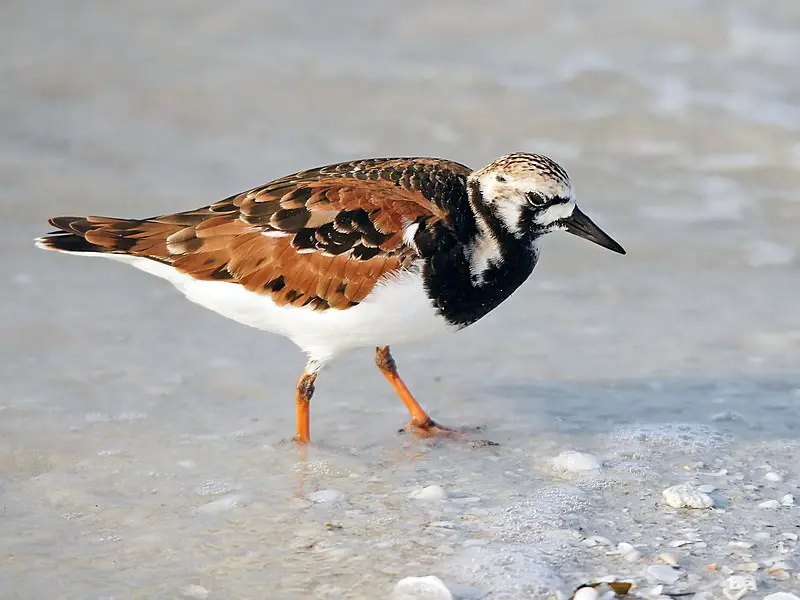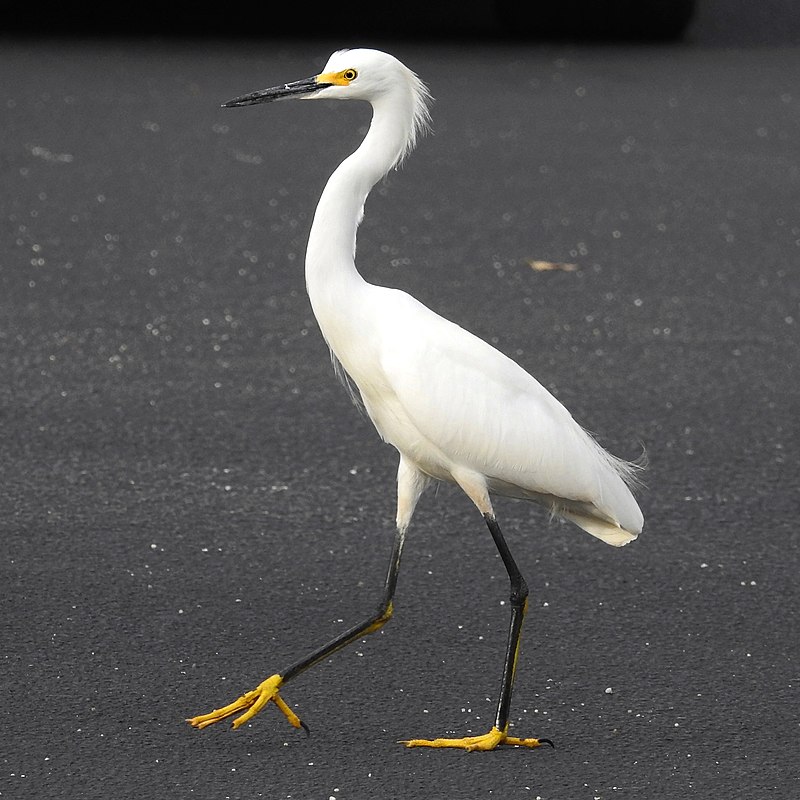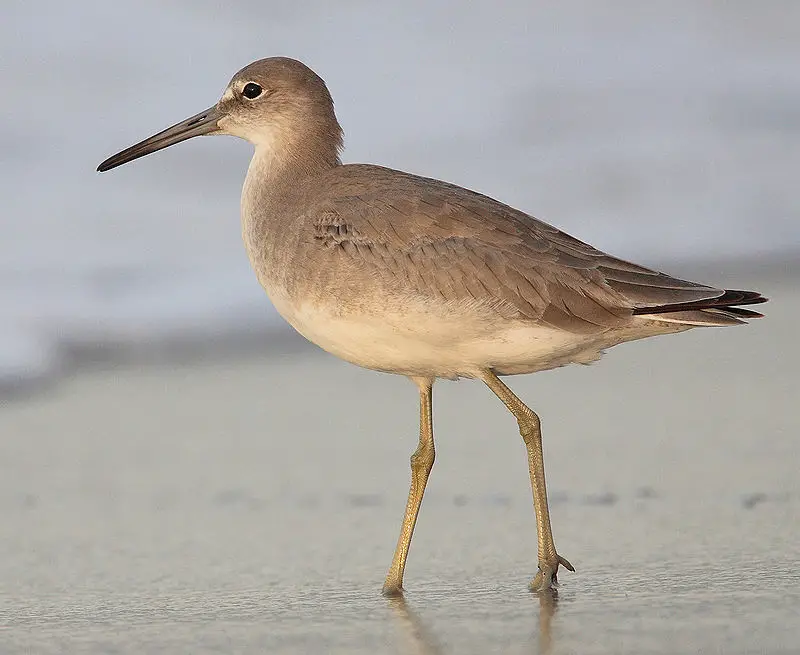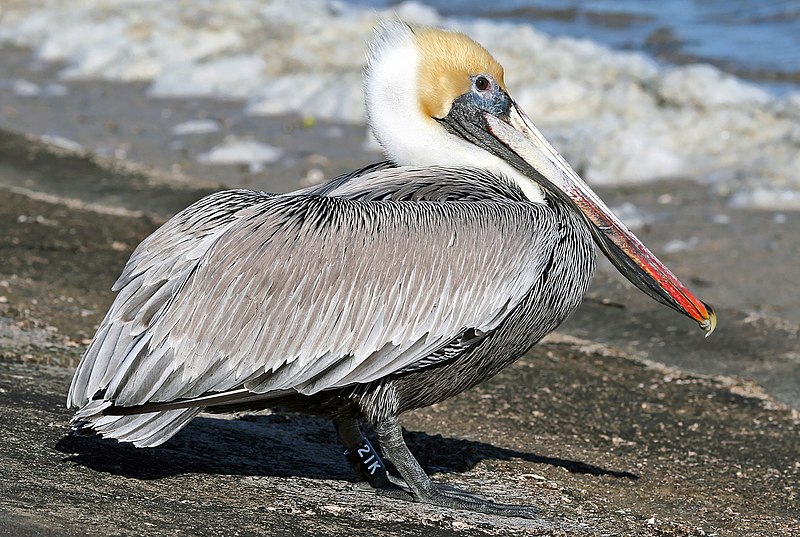Davis Islands is a small yet beautiful community in Hillsborough County, Florida. It is a favorite spot for tourists and locals due to its serene atmosphere and scenic beauty.
It is a great place to live if you love birds, as the island is home to various bird species. Birds play an essential role in the ecosystem and are an excellent source of beauty and wonder.
The island provides a comfortable habitat for many bird species, and it is not uncommon to see visitors taking pictures of these fascinating creatures. This article will explore the different bird species found on the Davis Islands and their unique characteristics.
13 Native Birds Of Davis Islands
Davis Islands, located in Tampa, Florida, is home to various native bird species. At the same time, there isn’t an exhaustive list specific to the Davis Islands alone.
Here are 13 native bird species commonly found in the Tampa Bay area, which includes the Davis Islands:
1. Red-Winged Blackbird

The red-winged blackbird is a beautiful bird found in most of North America and Central America.
Its distinct features include a glossy black body, white shoulder patches, and bright red wing coverts year round.
It prefers wetland habitats such as marshes, ponds, lakeshores, and agricultural fields. During breeding season, they inhabit grassy areas near water, then move south for the winter months.
For food, they mainly eat insects but also consume wild fruit or grains.
They are very social birds, often seen in large flocks during migration when their unmistakable “conk-la-ree” call can be heard echoing across the sky.
Scientific classification:
| Kingdom | Animalia |
| Phylum | Chordata |
| Class | Aves |
| Order | Passeriformes |
| Family | Icteridae |
| Genus | Agelaius |
| Species | A. phoeniceus |
Also Featured In: Most Common United States Birds, Flocks Birds around Us
2. American White Ibis
The American white ibis is a medium-sized bird with white plumage and long legs. It has a bright red-orange downward curved bill and black wing tips, usually only visible in flight.
This species of ibis can be found from Virginia south through most of the coastal New World tropics.
They have been known to inhabit marshes, swamps, ponds, lakeshores, and mangrove forests near water sources where they feed on crustaceans such as crabs and shrimp, among other aquatic animals like insects or snails.
The American white ibis plays an important role in its ecosystem by helping to control insect populations, which helps maintain balance within these environments.
Scientific classification:
| Kingdom | Animalia |
| Phylum | Chordata |
| Class | Aves |
| Order | Pelecaniformes |
| Family | Threskiornithidae |
| Genus | Eudocimus |
| Species | E. albus |
Also Featured In: Top Birds Found in Mexico, Birds You’ll Find in South Texas
3. Great Blue Heron
The Great Blue Heron is a majestic wading bird found in many parts of North America, Central America, the Caribbean, and even as far away as the Galapagos Islands.
It has an impressive wingspan which can reach up to six feet wide. Its feathers are mainly bluish-gray with brownish streaks on its neck and chest, while its head displays white plumes.
The adult herons can also be identified by their yellow bill and legs.
They live near bodies of water such as lakes, marshes, or rivers, feeding on fish using a spear-like motion with their sharp bills.
An all-white population exists only in South Florida and the Florida Keys, making it unique.
Scientific classification:
| Kingdom | Animalia |
| Phylum | Chordata |
| Class | Aves |
| Order | Pelecaniformes |
| Family | Ardeidae |
| Genus | Ardea |
| Species | A. herodias |
Also Featured In: Common Birds in Canada, Birds That Live in Colorado
4. Black Skimmer
The Black Skimmer is a seabird that belongs to the skimmer genus Rynchops and Laridae family.
It breeds in North and South America, while Northern populations migrate south for winter towards warmer climates such as the Caribbean or Pacific coasts.
The Southern American races have adapted to annual floods by migrating shorter during this time.
These birds are easily identified by their unique long red bill with an upper mandible longer than their lower mandible.
They feed mainly on small fish caught at night when they skim across shallow water using their beak like a knife cutting through waves of water.
Their dark grey back contrasts against white belly feathers, creating beautiful patterns in flight, aiding them in catching prey easier due to their camouflage effect above and below the water’s surface.
Scientific classification:
| Kingdom | Animalia |
| Phylum | Chordata |
| Class | Aves |
| Order | Charadriiformes |
| Family | Laridae |
| Genus | Rynchops |
| Species | R. niger |
Also Featured In: Most Unique Birds in Peru, Birds Live Near San Diego
5. Ruddy Turnstone

The Ruddy Turnstone is a small wading bird from the sandpiper family Scolopacidae. It has an attractive reddish-brown coloration and black patches on its back and wings.
This species breeds in northern parts of Eurasia and North America during the summertime before migrating southwards in the winter season to coastlines all over the world.
The Ruddy Turnstone feeds mainly on insects, mollusks, crustaceans, worms, and some plant material, such as seeds or berries, which it finds by probing into mudflats with its bill.
It also uses stones for turning them when searching for food under rocks or pebbles along shorelines, where they can often be seen darting around looking very busy.
Scientific classification:
| Kingdom | Animalia |
| Phylum | Chordata |
| Class | Aves |
| Order | Charadriiformes |
| Family | Scolopacidae |
| Genus | Arenaria |
| Species | A. interpres |
Also Featured In: Birds of Netherlands, Galapagos Birds You Should Know
6. Roseate Spoonbill
The Roseate Spoonbill is a beautiful and majestic bird in North and South America.
It belongs to the ibis family, Threskiornithidae, and its vibrant pink color comes from canthaxanthin pigment derived from their diet of crustaceans like shrimp.
Sadly, plume hunting almost drove this species close to extinction during the 18th and 19th centuries, but fortunately, it’s coming back due to conservation efforts made by dedicated wildlife organizations.
Its large spoon-like bill helps them filter out food sources such as small fish or frogs from shallow water areas while they wade through mudflats with their long legs looking for something tasty.
With its unique appearance, graceful wingspan, and impressive flight capabilities, the Roseate Spoonbill is an incredibly photogenic animal that will captivate the attention of any viewer lucky enough to witness it in all its glory.
Scientific classification:
| Kingdom | Animalia |
| Phylum | Chordata |
| Class | Aves |
| Order | Pelecaniformes |
| Family | Threskiornithidae |
| Genus | Platalea |
| Species | P. ajaja |
Also Featured In: Costa Rica Birds, Famous Paintings Birds
7. Snowy Egret

The Snowy Egret is a small white heron native to North America. Its scientific name, Egretta thula, comes from Provençal French for the little egret and an incorrect reference to the Black-necked Swan by Chilean naturalist Juan Ignacio Molina in 1782.
This beautiful bird has black legs, yellow feet, and a long plume of feathers on its head that often appears as if it’s wearing a crown.
It feeds primarily on insects and aquatic life like fish or frogs, making it well adapted for wetland habitats such as marshes or swamps and coastal areas close to shorelines.
Their graceful movements make them truly delightful creatures to observe while exploring nature.
Scientific classification:
| Kingdom | Animalia |
| Phylum | Chordata |
| Class | Aves |
| Order | Pelecaniformes |
| Family | Ardeidae |
| Genus | Egretta |
| Species | E. thula |
Also Featured In: Trinidad and Tobago birds, Birds that Live in the Deserts
8. White-Tailed Tropicbird
The White-tailed Tropicbird is a beautiful seabird that lives in the tropical waters of the Atlantic, Pacific, and Indian Oceans.
It is the smallest member of its order Phaethontiformes, measuring only 28 inches from head to tail.
Its wingspan can reach up to 45 inches wide. The bird has white plumage with black markings on its wings and tail feathers.
It also has an unmistakable long streamer trails behind them when they are in flight – a characteristic feature for all tropicbirds.
They nest mainly on remote islands throughout their range but have also recently begun nesting on Little Tobago.
These birds feed primarily off flying fish or squid near the ocean’s surface during daylight hours before returning home at nightfall.
Scientific classification:
| Kingdom | Animalia |
| Phylum | Chordata |
| Class | Aves |
| Order | Phaethontiformes |
| Family | Phaethontidae |
| Genus | Phaethon |
| Species | P. lepturus |
Also Featured In: Mauritius birds, Birds of Kauai, Hawaii
9. Least Tern
The Least Tern is a species of tern native to North America and northern South America. It has many close relatives, such as the yellow-billed and Peruvian tern from South America or the little tern from the Old World.
The bird measures 8.7 – 9.4 inches in length with a wingspan of 16–18 inches across, making it an intermediate size between most other species of birds within its family groupings.
Its feathers are usually gray on top with white underneath. They typically have darker accents near their heads and bright red bills for feeding during summer when they mate upon beaches found throughout these regions mentioned above.
They feed mainly on small fish that live at shallow depths near shorelines and nest nearby due to migratory patterns that occur annually each year.
Hence, this bird does not travel long distances away from areas known as home for them over long periods like some other types do.
Scientific classification:
| Kingdom | Animalia |
| Phylum | Chordata |
| Class | Aves |
| Order | Charadriiformes |
| Family | Laridae |
| Genus | Sternula |
| Species | S. antillarum |
Also Featured In: Aruba birds, Most Common Birds in South America Birds
10. Willet

The Willet is a large and robust bird of the Scolopacidae family. It belongs to the genus Tringa and is much larger than its closest relative – lesser yellowlegs, which its fine neck pattern can easily distinguish.
The willet has brown upperparts, white patches on the wings, and grey underparts. Its bill is thick, long, and straight in shape, with black coloration at the tip, while the legs are also long but greenish-grey.
They feed mainly on insects, worms, or crustaceans that they find near coastal waters or wetlands and grains or seeds when they are available during winter.
Scientific classification:
| Kingdom | Animalia |
| Phylum | Chordata |
| Class | Aves |
| Order | Charadriiformes |
| Family | Scolopacidae |
| Genus | Tringa |
| Species | T. semipalmata |
Also Featured In: birds of Delaware, Birds that can be Seen in Outer Banks
11. Brown Pelican

The majestic brown pelican is a dive-feeding bird that belongs to the pelican family. It is one of the three pelican species in the Americas and is known to dive into water to catch its prey.
This bird can be found from the Atlantic Coast of New Jersey to the mouth of the Amazon River and along the Pacific Coast from British Columbia to northern Chile, including the Galapagos Islands.
Its scientific name is Pelecanus occidentalis, and it has a colored brown plumage, its distinct characteristic.
The brown pelican belongs to the largest bird species today, with a wingspan that can stretch up to seven feet long.
This bird helps maintain a balance in the ecosystem by eating smaller fish, crustaceans, and other aquatic prey.
Scientific classification:
| Kingdom | Animalia |
| Phylum | Chordata |
| Class | Aves |
| Order | Pelecaniformes |
| Family | Pelecanidae |
| Genus | Pelecanus |
| Species | P. occidentalis |
Also Featured In: Birds You’ll Find in the Sea, Water Birds Live around Us
12. Wilson’s Plover
Wilson’s plover is a bird belonging to the Charadriidae family. His friend George Ord named The species after the ornithologist Alexander Wilson.
This small bird is typically found along the coasts of the Americas and breeds on both sides of the equator. Its range extends northward, including much of the U.S.
Eastern seaboard and the Pacific coast of Mexico. Wilson’s plover is a coastal wader who loves inhabiting sandy and rocky shores, beaches, and salt marshes. They feed on crustaceans, insects, and other small creatures near the shoreline.
This bird’s male and female have a similar appearance, with brownish-grey upperparts and white underparts. They are known to defend their nests and young against predators fiercely.
The Wilson’s plover is a unique bird species that plays a significant role in the coastal ecosystem.
Scientific classification:
| Kingdom | Animalia |
| Phylum | Chordata |
| Class | Aves |
| Order | Charadriiformes |
| Family | Charadriidae |
| Genus | Charadrius |
| Species | C. wilsonia |
Also Featured In: Most Common Oaxaca Birds, Great Abaco Island Birds
13. Wading Birds
Wading birds are commonly found near shorelines and mudflats, where they forage for small arthropods in the sand and mud. They are members of the Charadriiformes order and often have long legs to help them wade through water.
In Europe, these birds are referred to as “waders”, whereas in North America they are known as “shorebirds”. These birds often scurry along the water’s edge, picking small creatures from the sand and mud.
While some larger wading birds may be called “waders,” the term is more commonly used to refer to the smaller shorebirds.
These birds play an important role in their ecosystems, helping to control insect and crustacean populations along the water’s edge.
Scientific classification:
| Kingdom | Animalia |
| Phylum | Chordata |
| Class | Aves |
| Clade | Gruimorphae |
| Order | Charadriiformes |
Also Featured In: Common Birds of Hutchinson Island,
Conclusion
The diverse array of native birds on the Davis Islands highlights the importance of preserving natural habitats within urban environments. These birds, ranging from the majestic Osprey to the colorful Painted Bunting, contribute to the island’s ecological balance and enrich the lives of its residents and visitors.
By conserving and protecting these avian populations, we safeguard biodiversity and promote a deeper appreciation for the natural world. Davis Islands serves as a reminder that even in bustling cityscapes, harmonious coexistence with wildlife is possible and essential for a sustainable future.